Does My Cat Actually Love Me? A Vet Tech’s Guide to Cracking the Feline Code
In my long career as a veterinary technician, I’ve seen it all. I’ve cleaned more cages than I can count, assisted in countless complex procedures, and spent a huge chunk of my time reassuring worried pet owners. And honestly, the question I hear most often is whispered in the quiet of an exam room: “Does my cat really love me?”
In this article
People desperately want to know if that bond they feel is a two-way street. The short answer is a resounding YES. But here’s the thing: cats speak a different language, one that’s far more subtle than a dog’s slobbery kiss or wagging tail. Their affection is all wrapped up in trust and safety, which makes sense for an animal that’s both a tiny predator and a potential prey item.
I’ve worked with terrified shelter cats who took months to offer a single sign of trust, and I’ve known confident fluffballs who use their entire body to shout their happiness from the rooftops. Learning their language isn’t just for fun—it’s the key to building a real, respectful relationship. Once you start seeing the world from their perspective, you’ll stop wondering if they love you. You’ll see the proof everywhere.
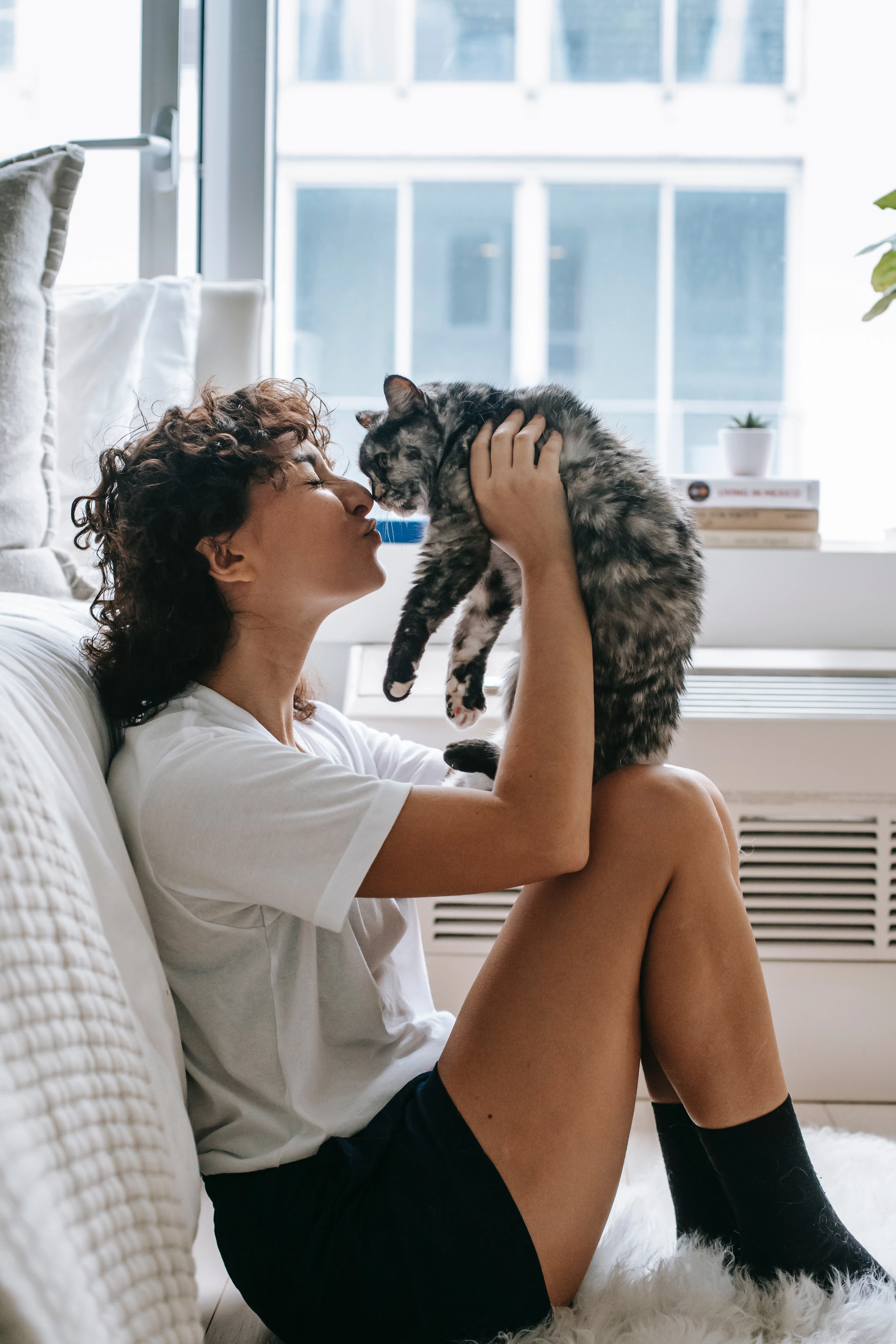
Let’s Get Nerdy: The Science of Cat Cuddles
To really get what your cat is trying to tell you, you need to understand one thing: their world revolves around scent. Cats have scent glands all over their bodies—in their cheeks, on their foreheads, between their paw pads, and at the base of their tails. These glands release special chemicals called pheromones, which are like little chemical messages left for others to read.
So, when your cat purposefully rubs their cheeks against your leg, it’s not just a casual nuzzle. It’s a deliberate act called “bunting,” and it’s a massive compliment. They are marking you with their unique “I’m safe and happy” scent. They’re essentially saying, “You are safe. You are mine. You are part of my family.” In a home with multiple cats, you’ll notice them rubbing on each other and on the furniture, creating one big “group scent.” When your cat does this to you, they’re officially accepting you into their exclusive club. It’s a profound gesture of inclusion.
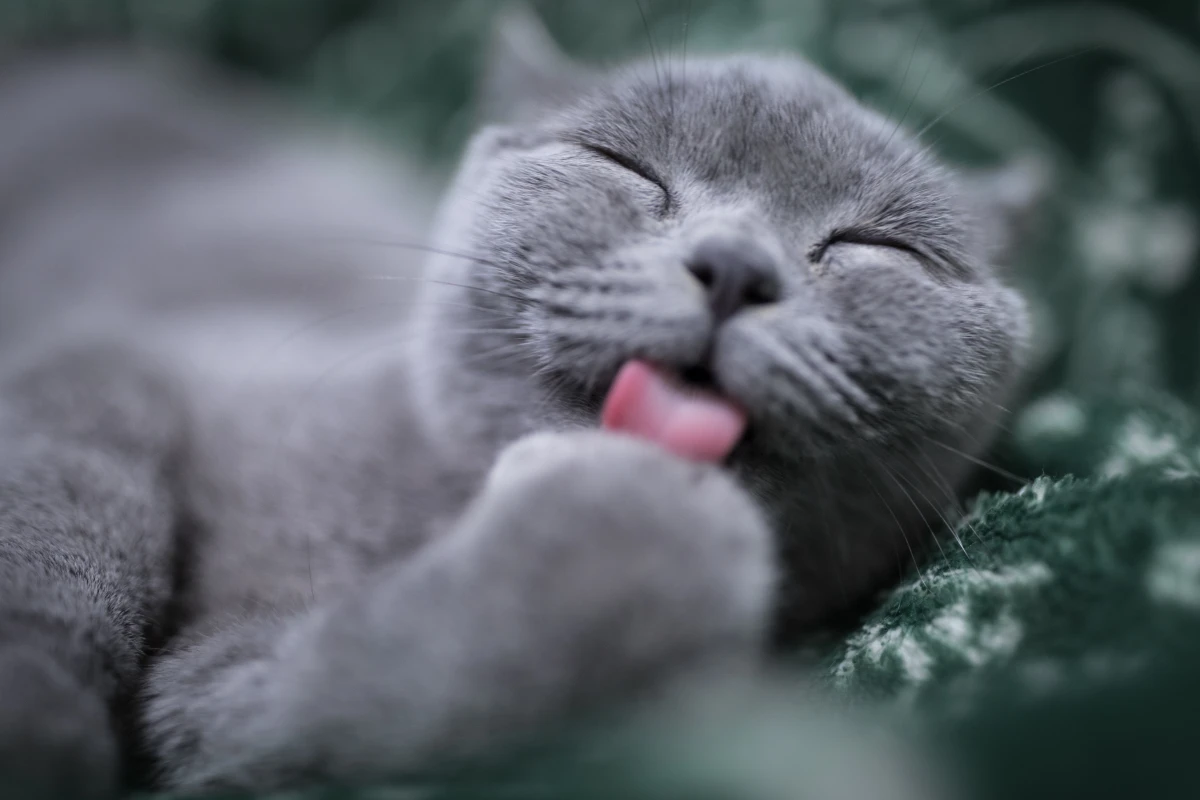
Decoding Your Cat’s Love Language
Cats use a whole mix of body language, sounds, and physical contact to get their point across. After years of watching them in clinics and homes, I’ve gotten pretty good at translating. Here are the most common signs that your cat trusts and adores you.
The Head Bunt and Cheek Rub
As we just covered, this is your cat claiming you as their own in the best possible way. I’ll never forget a semi-feral cat we treated at the clinic for a bad injury. For weeks, he’d hiss if you even looked at his cage. After his pain was managed and we started a slow, patient trust-building routine, the first breakthrough came. As I walked by, he made this tiny, hesitant press of his cheek against the cage bars. He wasn’t asking for food; he was signaling that I was no longer a threat. That little gesture meant more than a thousand purrs.
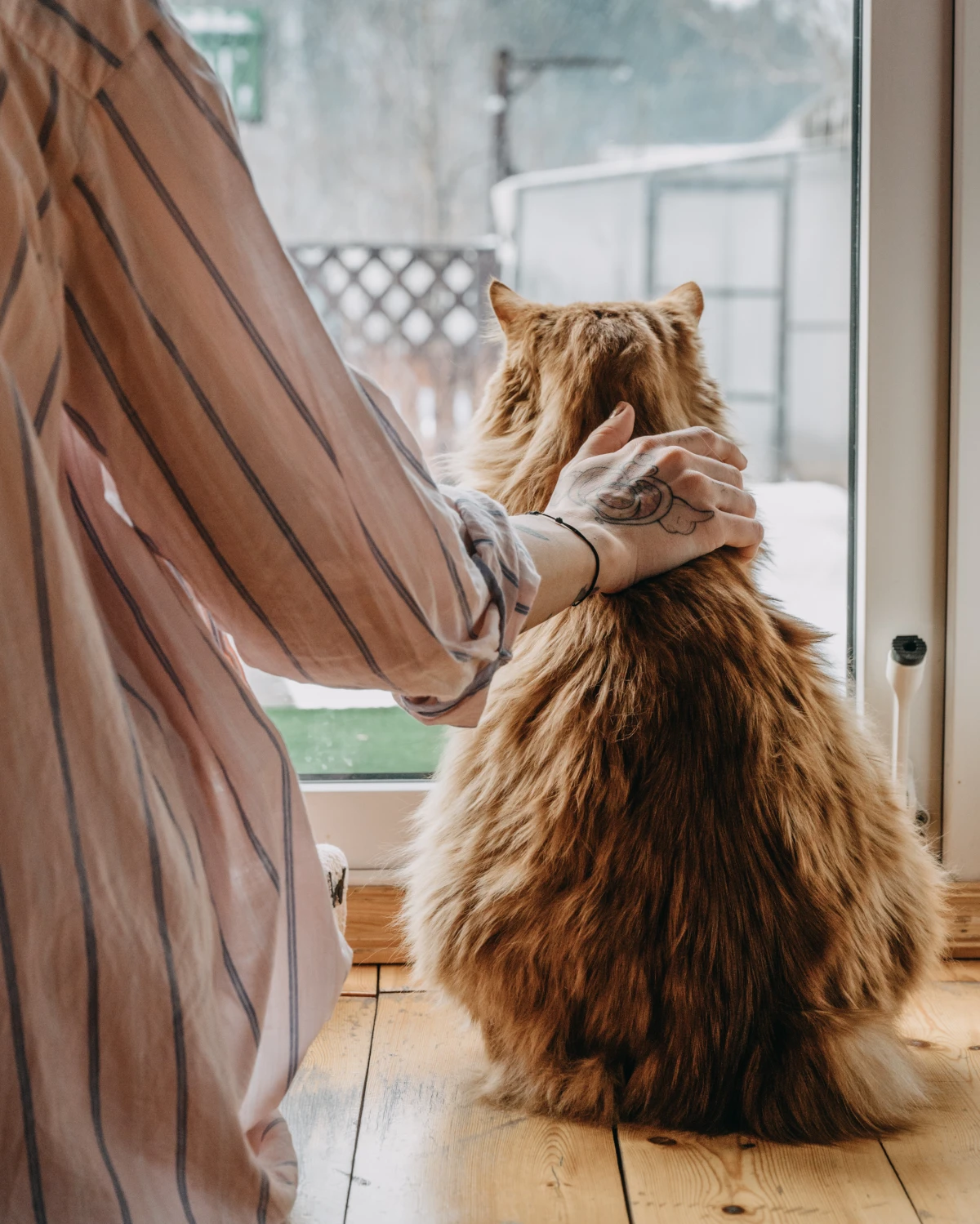
Heads up! This is SERIOUSLY important. You must know the difference between a loving head bunt and head pressing. Head pressing is when a cat compulsively and repeatedly presses its head against a wall, the floor, or another hard surface for no reason. This is NOT affection. It’s a major red flag for a serious neurological problem, like poisoning or a brain tumor. If you ever see your cat doing this, get to a vet immediately. It’s a true medical emergency. A quick search online for a video comparing “cat head bunting vs. head pressing” can be a literal lifesaver.
Kneading, or “Making Biscuits”
You know the move: your cat is on your lap, purring away, rhythmically pushing their front paws into your leg or a soft blanket. This adorable behavior is a holdover from kittenhood, when they would knead their mother’s belly to get milk to flow. When an adult cat does this to you, it means they feel completely safe, content, and cared for, just like they did as a tiny kitten.
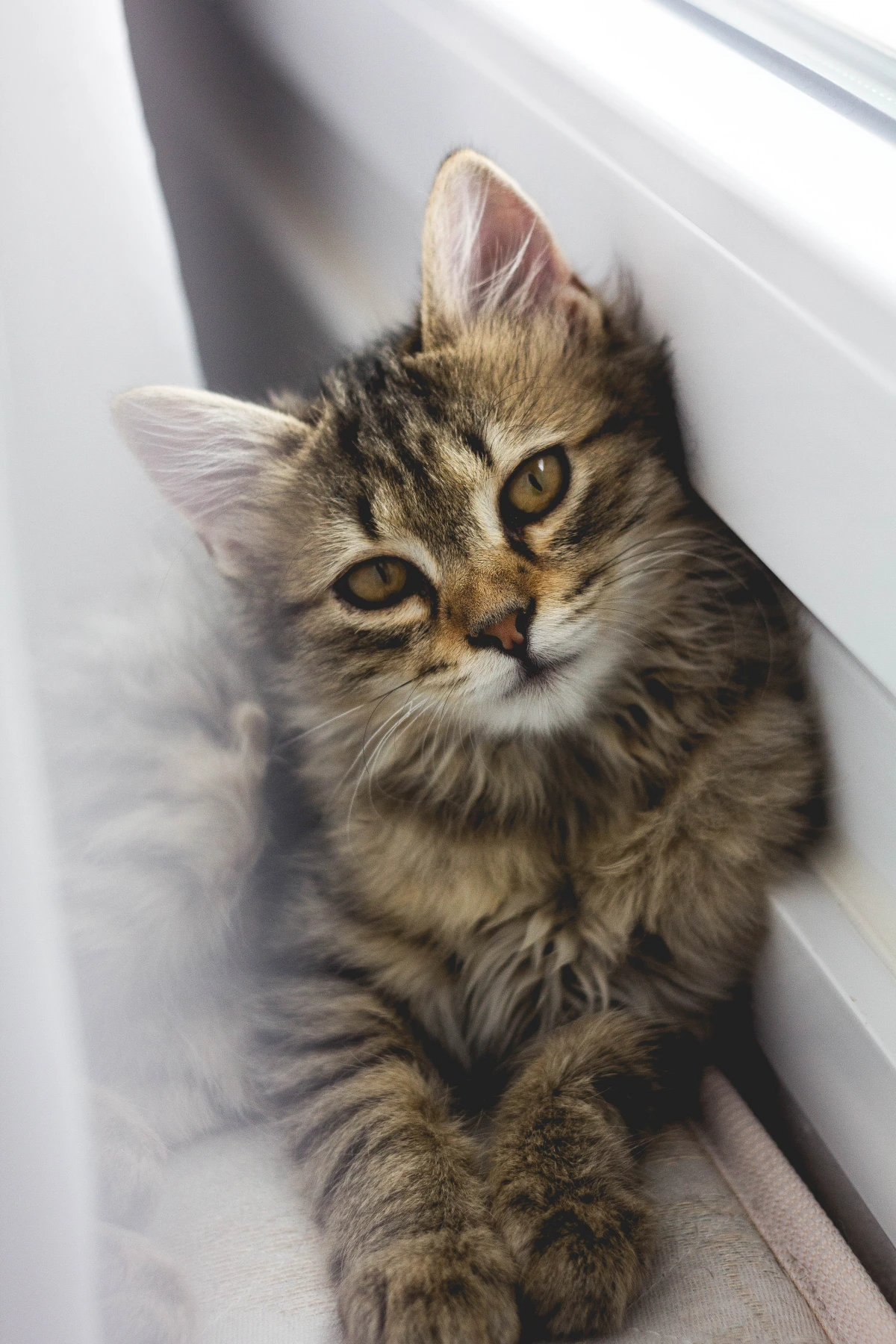
Quick Tip: If your cat’s claws make this a painful experience, please don’t punish them! They’re showing you love, and a scolding would just be confusing and damaging. Instead, keep a thick, folded blanket on your lap as a designated biscuit-making zone. This is also a great time to work on nail trims. Here’s a super simple, vet-tech-approved method:
- Paw Practice: Start by just getting your cat used to you touching their paws. Gently handle a paw for a second, then immediately give them a high-value treat. Do this for a few days until they’re comfortable with it.
- The Squeeze: Next, gently press on a single toe pad to extend the claw. Look at it for a second, release it, and give another treat. No clipping yet! You’re just normalizing the action.
- The Tiniest Trim: Once they’re cool with the first two steps, try clipping just the very sharp tip off a single nail. Then stop! Shower them with praise and their favorite treat. You can do one nail a day if you have to. The goal is progress, not perfection. A good pair of cat nail clippers will only set you back about $10-$15 at a pet store or online.
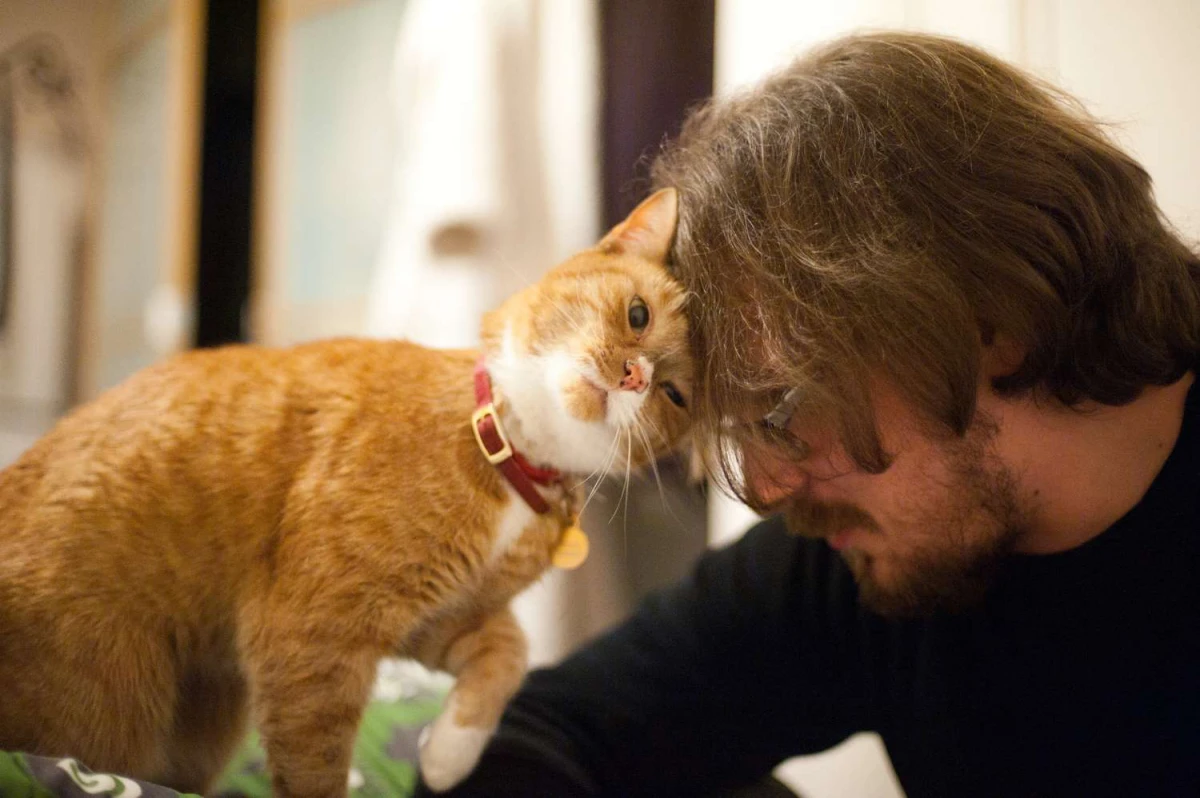
The Slow Blink
Ever notice your cat looking at you from across the room, and then slowly, deliberately, closing and opening their eyes? That’s not just a tired blink; that’s a “cat kiss.” In the animal world, a direct, unbroken stare is a threat. By closing their eyes in your presence, your cat is making themselves vulnerable and showing you they trust you completely. It’s their way of saying, “I feel safe with you.”
Your turn! Next time you see your cat looking at you with soft, relaxed eyes, try sending a slow blink back. Soften your own gaze, slowly close your eyes for a couple of seconds, and then open them. It’s a quiet, powerful way to say “I love you, too” in their language. Let me know how it goes!
The Tummy-Up Display
When a cat rolls onto its back and exposes its stomach, it’s showing the ultimate trust. That belly protects all their vital organs, so showing it to you is a sign of immense comfort and safety. But this is where so many people get it wrong. For most cats, an exposed belly is a sign of trust, NOT an invitation for a belly rub.
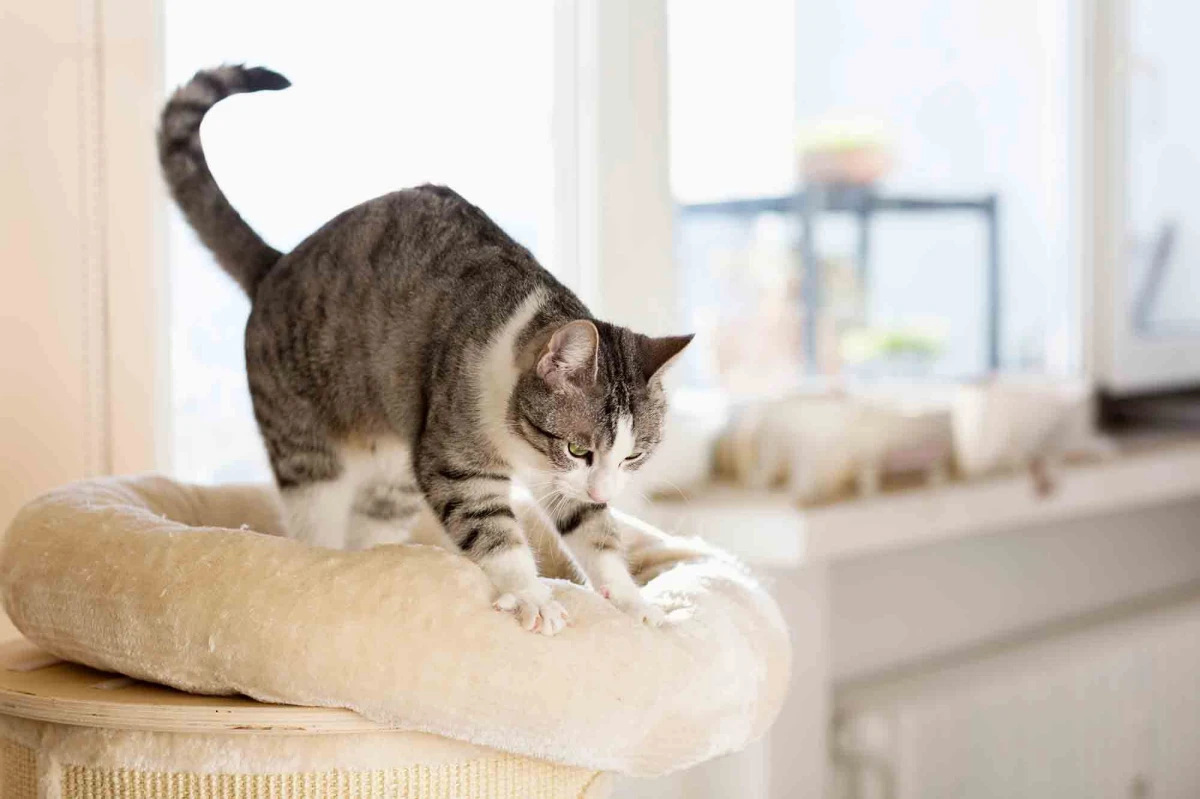
So, when you see that fluffy tummy, what’s the right move?
- Do This: Acknowledge the gesture with a soft, happy voice. Give them a slow blink. Tell them they’re a good kitty. This validates their trust without violating it.
- Not That: Don’t dive in and start rubbing their stomach like they’re a golden retriever. For many cats, this feels like an ambush. You took their gesture of ultimate trust and immediately touched their most vulnerable area, which can trigger a defensive reaction—hello, claws and teeth!
The Dreaded “Love Bite”
Have you ever been petting your perfectly happy cat, only for them to suddenly whip around and nip you? It’s confusing, right? This is often due to something called petting-induced overstimulation. It’s not malicious. Think of it like this: their nervous system gets overloaded with all the sensory input from being petted. The nip is their very abrupt way of saying, “OKAY, I’M DONE NOW.”
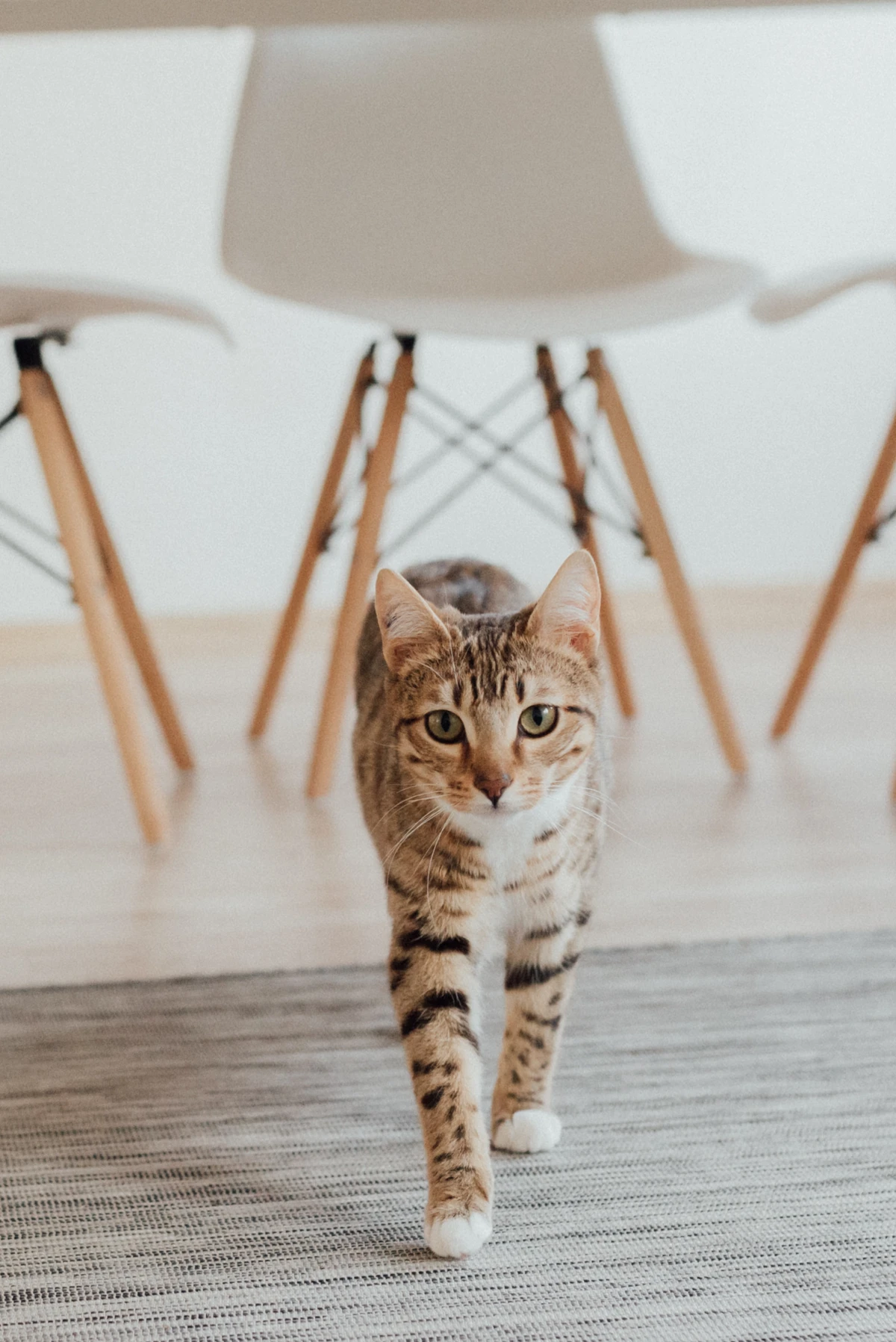
The key is to learn their personal limits and watch for the early warning signs: a twitching tail, skin rippling on their back, or ears flattening slightly. Stop petting before they feel the need to bite.
Decoding Tail Talk
A cat’s tail is like a mood barometer. A quick glance can tell you a lot!
- Straight Up, with a Little Quiver: This is pure happiness and excitement to see you. It’s one of the clearest signs of affection.
- The “Question Mark” Tail: A tail held high with a little curve at the tip is a sign of a happy, playful, and curious cat. They’re feeling friendly and open to interaction.
- Low and Lashing: A tail that’s thumping or whipping back and forth is a clear sign of irritation or overstimulation. Back off and give them space.
- The Puffy “Bottle Brush”: This is a cat that is either terrified or extremely agitated. They’re trying to make themselves look bigger to ward off a threat. Do not approach!
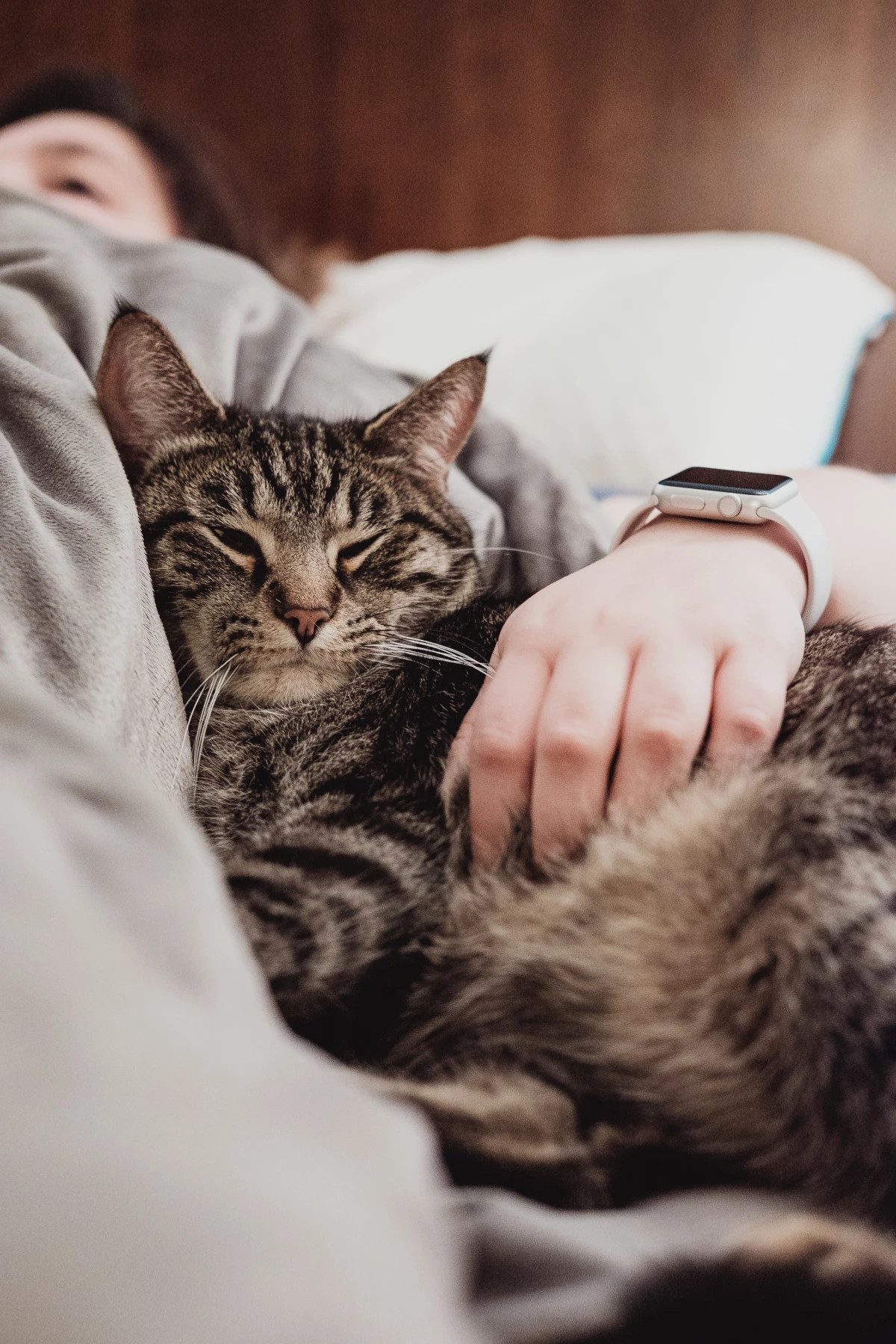
Building Trust with a Shy or Fearful Cat
Working with rescued cats has taught me a lot about patience. Building a bond with a cat that has a rough past is all about giving them choice and control. It can take weeks or even months, but it’s incredibly rewarding.
Here’s a simple trust-building plan. Think of it as your “scaredy cat” starter kit:
First, you’ll need a few supplies. I recommend a good wand toy with feathers (something like Da Bird costs around $10-$15 and is amazing for confidence-building play), some irresistible lickable treats (Churu tubes are magic, and a pack is usually $4-$6), and for really tough cases, a pheromone diffuser (like Feliway, which can run $25-$35 but creates a calming environment). Then, just follow the process. Start by just sitting quietly in the room with them, avoiding eye contact and letting them see you as a non-threat. Toss those yummy treats near them without pressure. Eventually, engage them with the wand toy from a safe distance. Let them be the one to finally make the first move for contact. It’s all about patience.
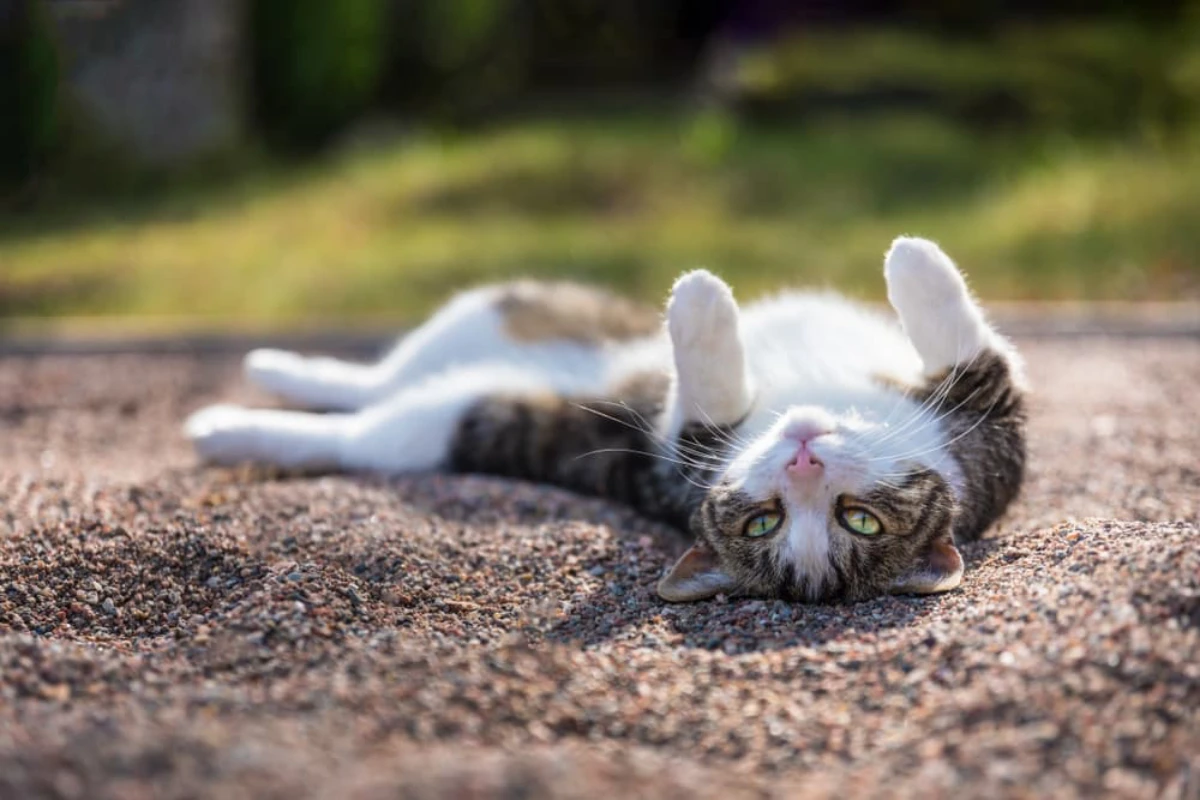
When a Good Thing Changes
You know your cat better than anyone. One of the most critical things you can do as a pet owner is to notice sudden changes in behavior. An otherwise independent cat that suddenly becomes a needy, clingy shadow might be feeling unwell. On the flip side, a cuddly cat that suddenly becomes withdrawn or hisses when you touch them might be in pain from something like arthritis.
My advice here is firm: do not dismiss significant behavioral shifts. It’s always, always best to schedule a check-up with your vet to rule out a medical cause before assuming it’s just a new quirk.
A Final Thought
Building a loving bond with a cat is built on respecting their boundaries and learning their unique language. And a quick safety note—cat bites and scratches can be nasty. A deep bite especially needs a doctor’s attention. Always wash any wound thoroughly with soap and water.
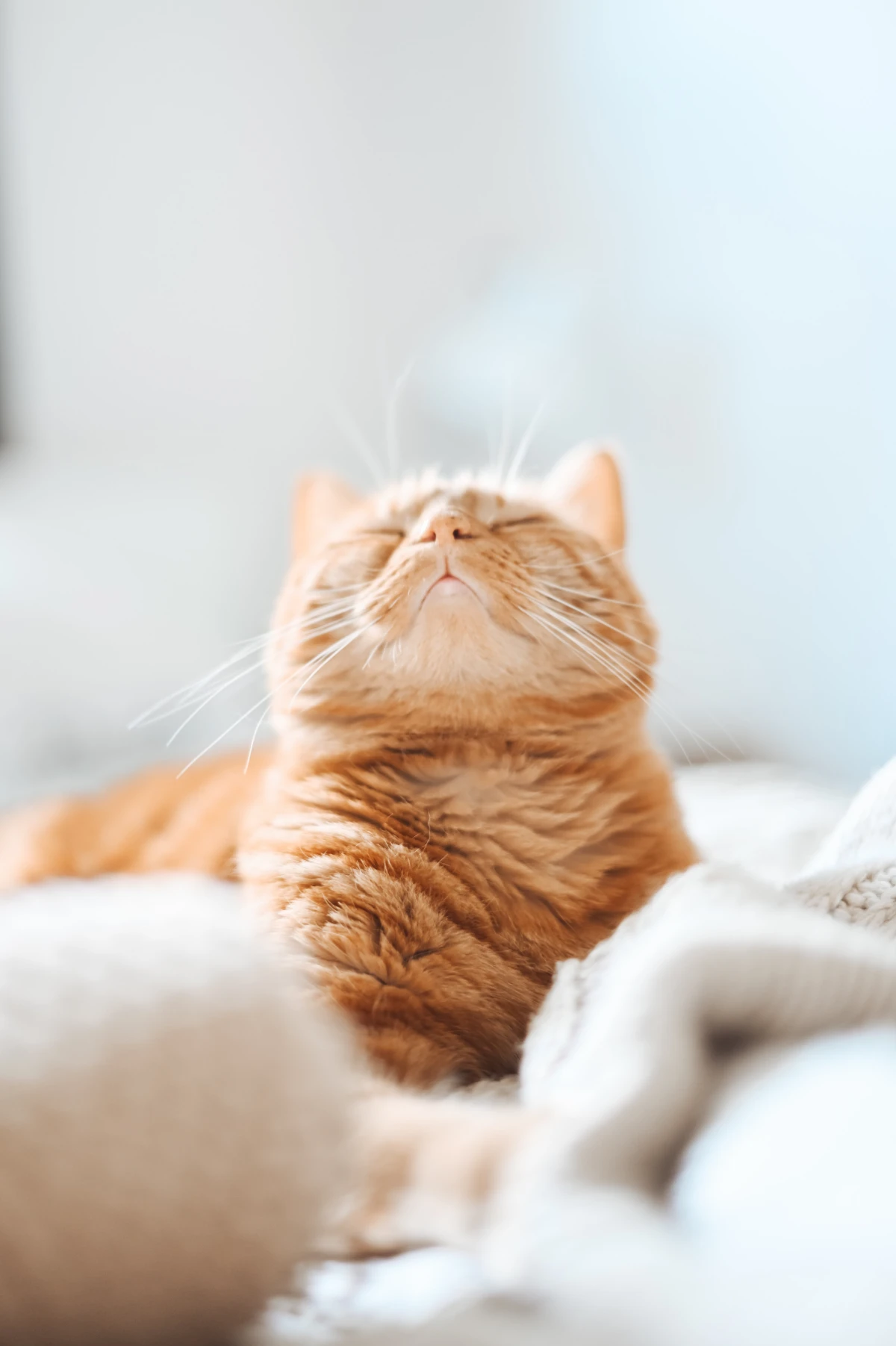
Your cat may not bring you your slippers, but they show their love in the quiet trust of a slow blink, the proprietary rub of a cheek, and the rumbling motor of a purr on your chest. Learning to see and appreciate these gestures is one of the greatest joys of sharing your life with these amazing, complex creatures.
Inspiration:
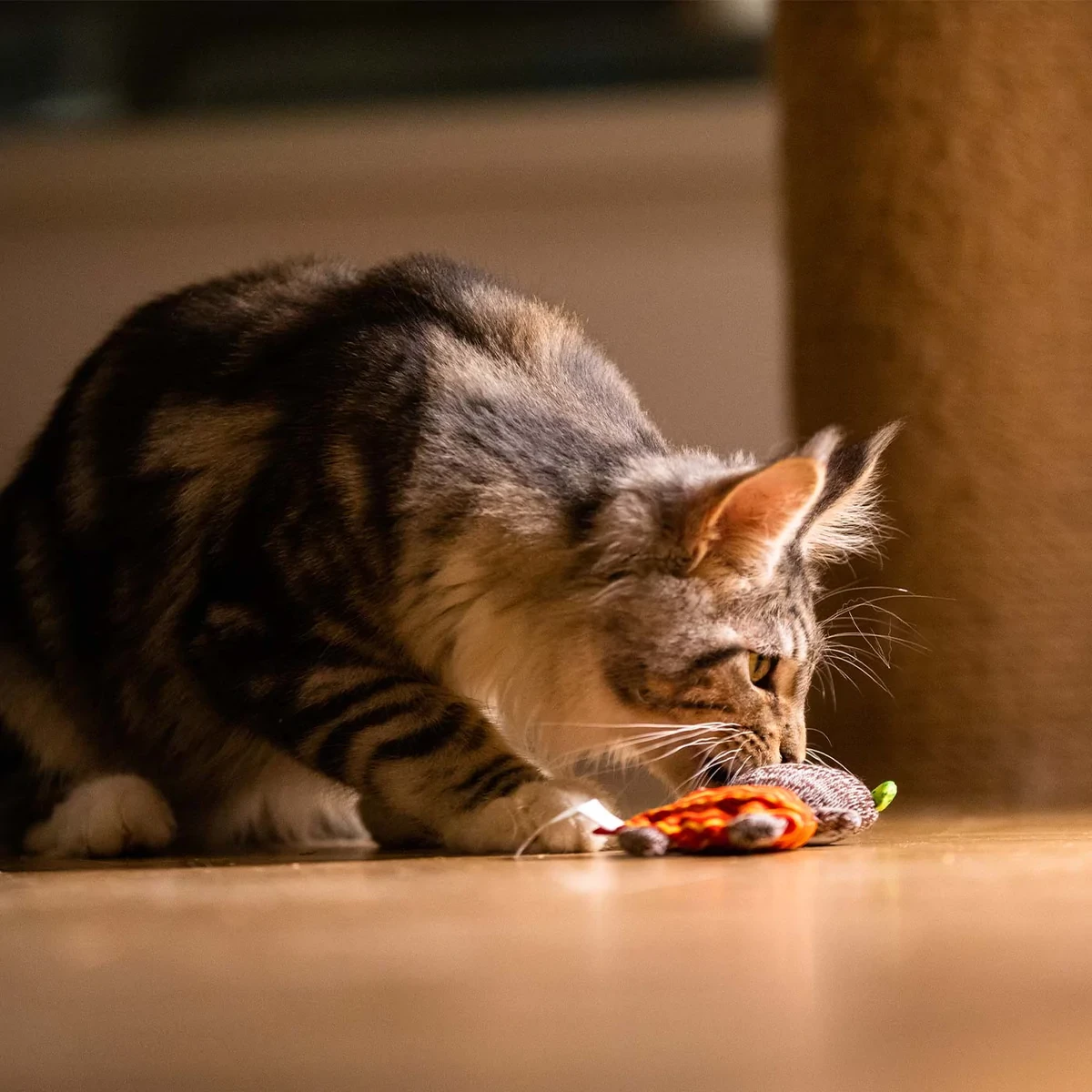
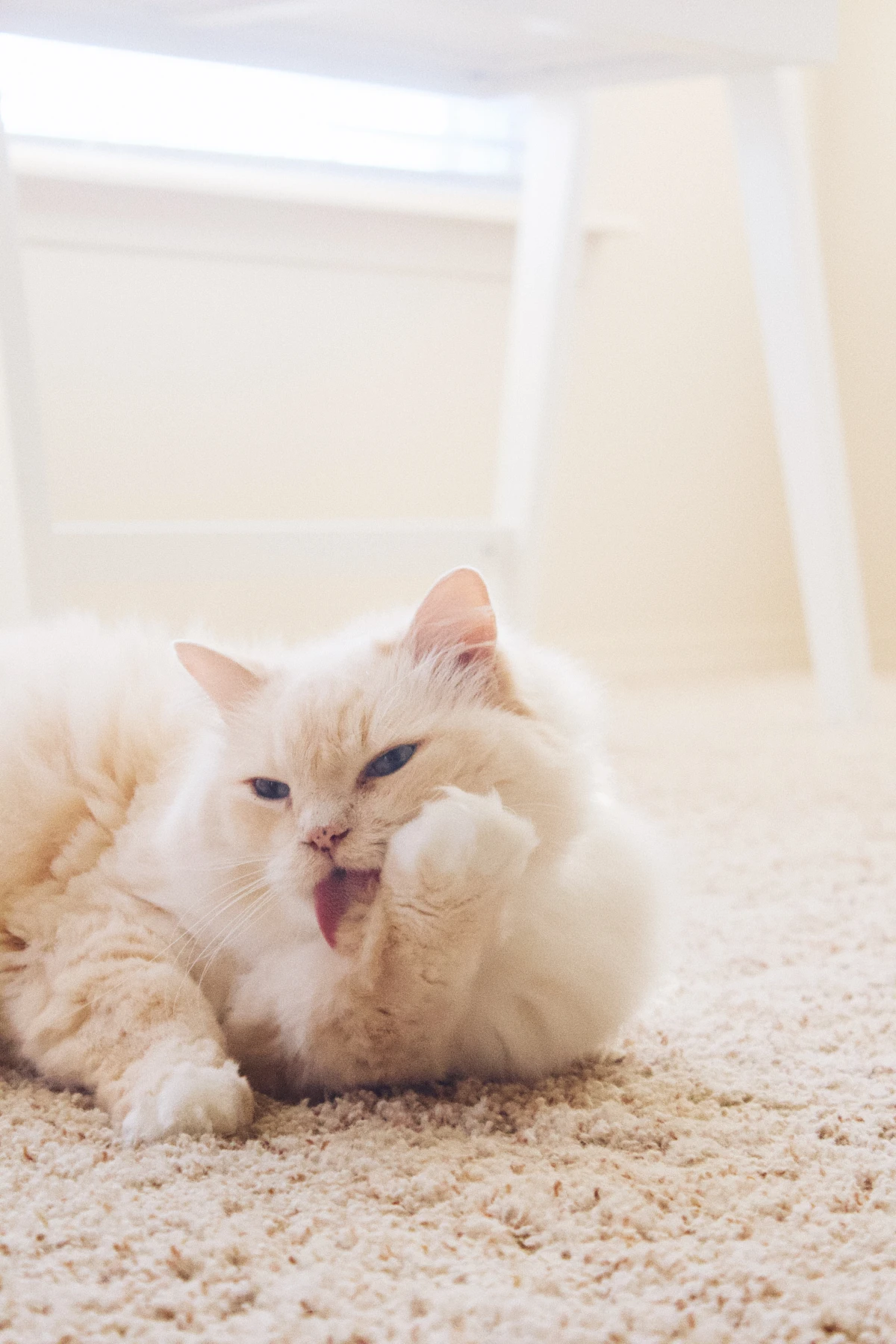
That fluffy belly is so inviting! Is showing it always an invitation for a tummy rub?
Not always, and this is a crucial piece of the feline code. When a cat rolls over to expose its stomach, it’s demonstrating the ultimate trust. They are showing you their most vulnerable area, saying, “I feel completely safe with you.” For many cats, however, this is a “look, don’t touch” gesture. A sudden hand reaching for the belly can be interpreted as a betrayal of that trust, triggering a defensive reaction. To honor their signal, offer a slow blink back and perhaps a gentle chin scratch instead. You’re acknowledging and respecting their vulnerability, which strengthens your bond far more than a risky belly rub.
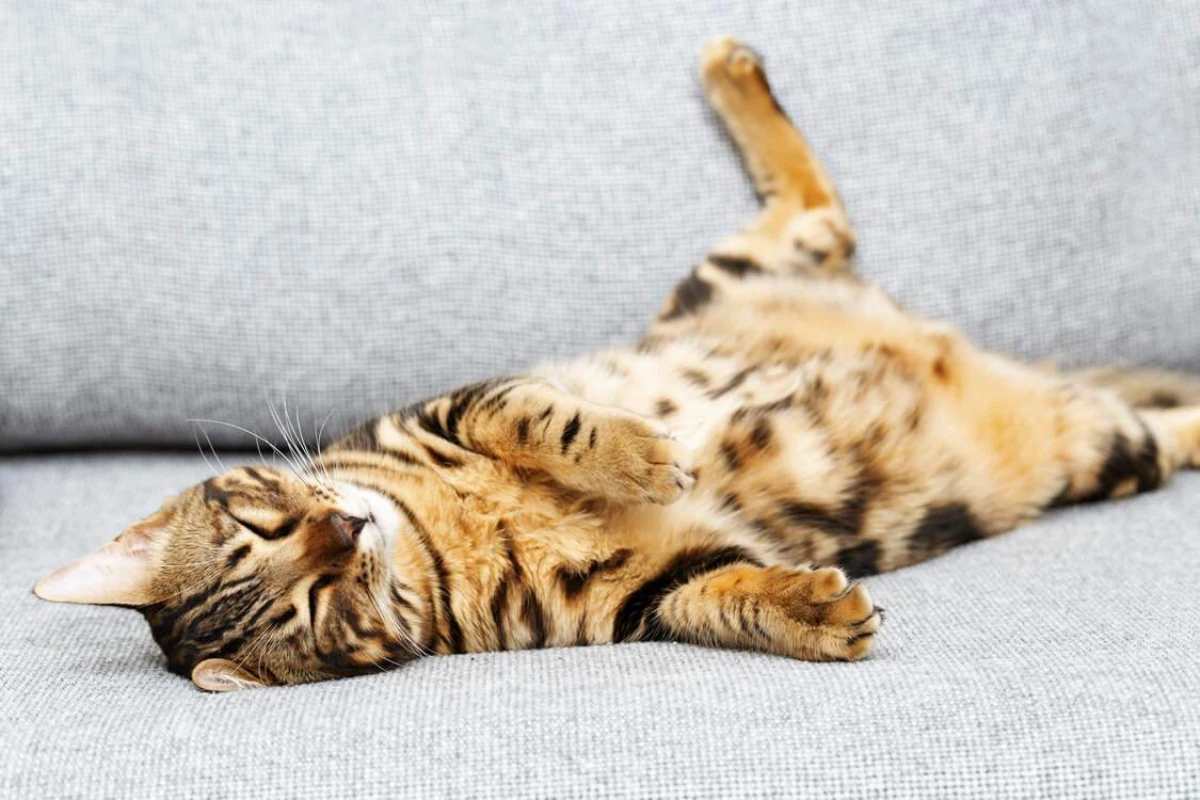
A cat’s purr vibrates at a frequency between 25 and 150 Hertz—a range that studies have shown can promote bone density and healing.
This isn’t just a happy hum; it’s a complex tool for communication and self-soothing. When your cat purrs while curled up on your lap, they are not only showing contentment but are also sharing that therapeutic, calming vibration with you. It’s a profound gesture of care, extending their own mechanism for comfort and recovery to you, their trusted companion. It’s a physical manifestation of the bond you share.
Tech-Enhanced Ambiance: A Feliway Classic diffuser releases a synthetic copy of the feline facial pheromone, the same one your cat deposits when rubbing their cheeks on you. It sends a continuous message of safety and familiarity throughout a room, reducing stress and encouraging relaxed, affectionate behaviors.
Low-Tech Personal Touch: Simply leaving a worn, unwashed t-shirt or a soft fleece blanket that carries your scent in your cat’s favorite sleeping spot achieves a similar goal. It creates a “scent soaker” that tells your cat “this space is safe, my human is part of this territory.”
Both methods help build the “group scent” that is so critical to a cat’s sense of belonging.










